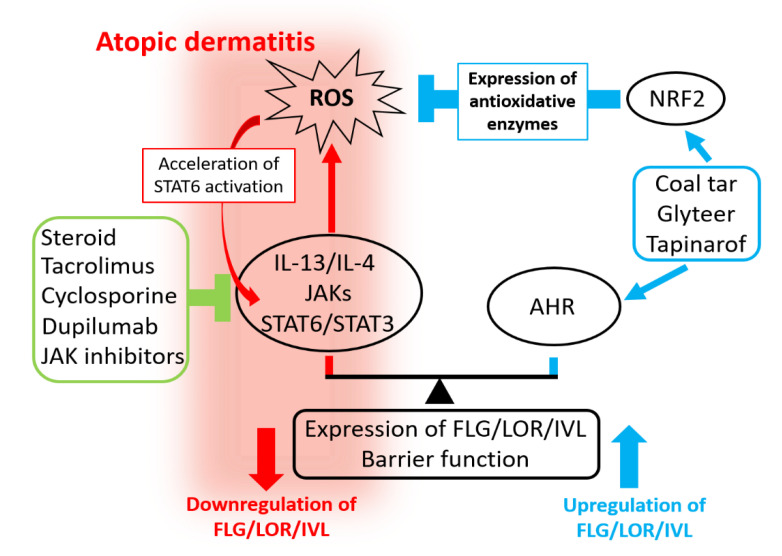Figure 6.
Mechanisms of action of therapeutic remedies for AD. Skin barrier function is regulated via competition between the AHR axis (up-regulation of barrier) and the IL-13/IL-4‒JAK‒STAT6/STAT3 axis (down-regulation of barrier). The IL-13/IL-4‒JAK‒STAT6/STAT3 axis down-regulates the expression of FLG, LOR, and IVL and disrupts barrier function. It also generates reactive oxygen species (ROS), which accelerate the STAT6 activation. Standard and current therapeutic agents inhibit the IL-13/IL-4‒JAK‒STAT6/STAT3 axis. Steroid, the calcineurin inhibitor tacrolimus, and cyclosporine inhibit the production of IL-13/IL-4 from Th2 cells and ILC2s. The anti-IL-4Rα antibody dupilumab inhibits the IL-13/IL-4 ligation. JAK inhibitors inhibit the activation of JAK. The AHR axis up-regulates the expression of FLG, LOR, and IVL and strengthens barrier function. Antioxidative AHR agonists activate both AHR and nuclear factor E2-related factor 2 (NRF2). Coal tar, soybean tar glyteer, and tapinarof are antioxidative AHR agonists. They can up-regulate the expression of FLG, LOR, and IVL and strengthen the barrier function via AHR. They can also neutralize ROS by antioxidative enzymes induced by NRF2 activation. Combined treatments targeting the IL-13/IL-4–JAK–STAT6/STAT3 axis and the AHR axis may enhance the treatment efficacy.

